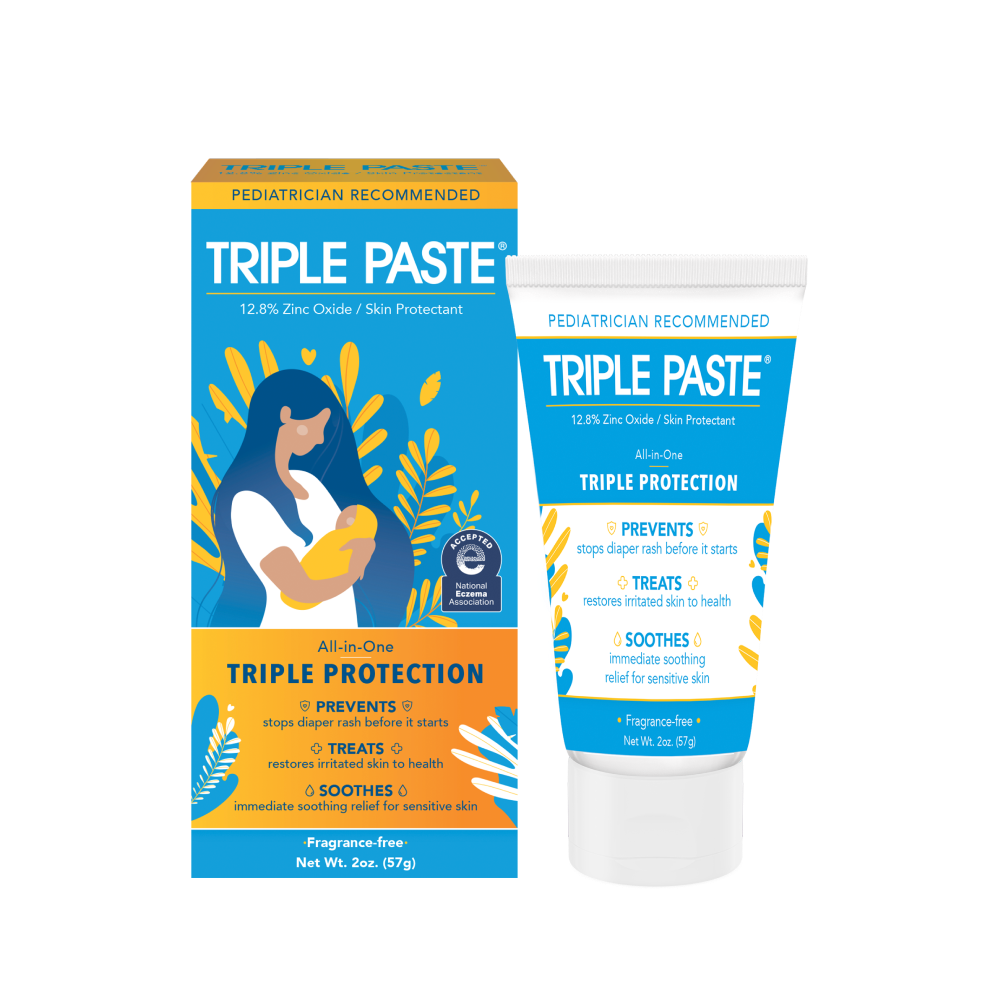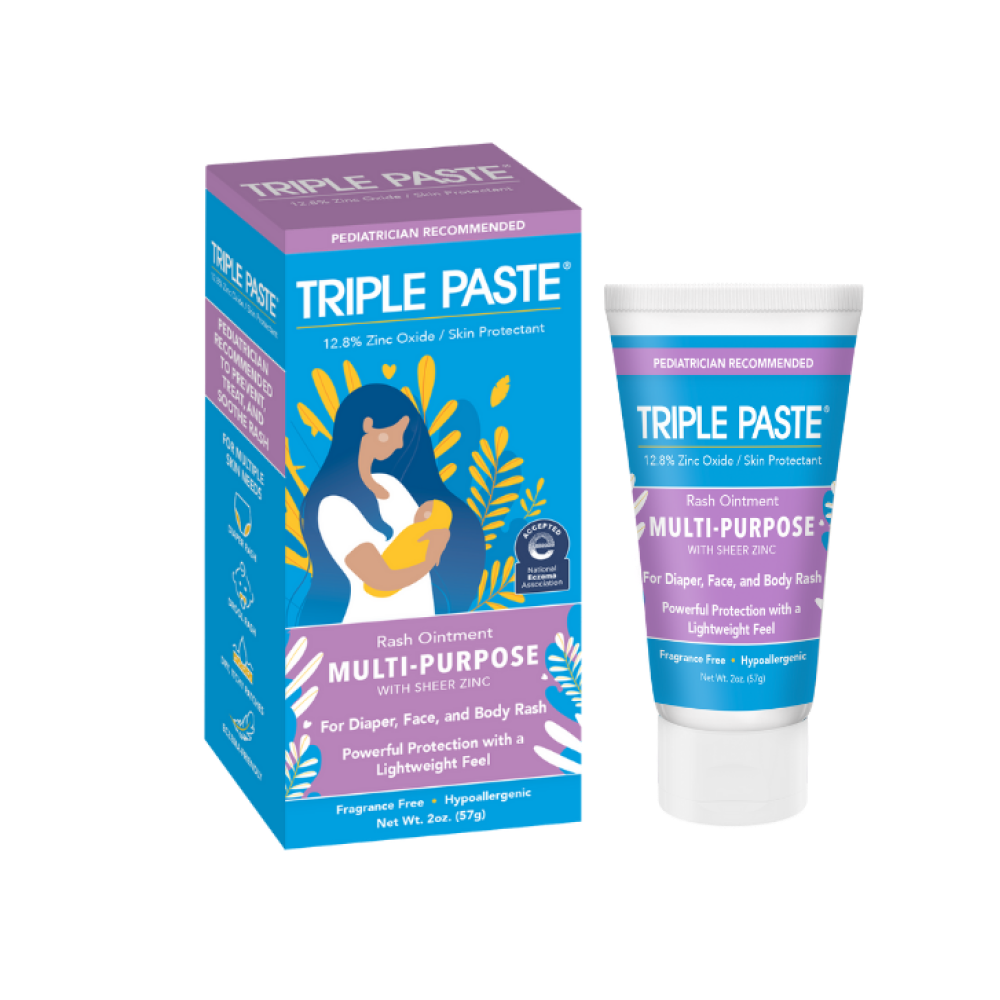So Many Diaper Rash Creams! How Do You Choose?
When you’re buying any products for your baby’s skin, you always want to provide the best. But how do you know what’s the best ointment to use to prevent or treat diaper rash?
Not only are there different types of diaper rash creams, but there are also various types of diaper rash. To make the best choice, it helps to understand the differences in application, consistency, benefits, and ingredients, so you can select the most appropriate product for your baby's needs.
Ingredients in Diaper Rash Creams and Ointments
Diaper rash products may be called by different names: creams, ointments, and pastes. These terms are often used interchangeably, so it’s better to focus on the ingredients.
The American Academy of Pediatrics (AAP) and the American Academy of Dermatology (AAD) recommend choosing a diaper rash cream that contains zinc oxide and/or petrolatum as the main active ingredient:
- Zinc oxide is one of the most effective ingredients and tends to heal diaper rash fast. Non-nano zinc oxide works well as a barrier cream because it does not get absorbed through the skin. It stays on top as a protective layer and treats irritation at the source. Higher concentrations of zinc oxide are typically found in products formulated for more stubborn or persistent diaper rash.
- Petrolatum (petroleum jelly) is another skin protectant in diaper rash ointments and creams that create a barrier between the skin and the diaper. It has a greasier and stickier texture than zinc oxide and is often used in combination with zinc oxide for added protection.
Both organizations also recommend using diaper rash products that are fragrance free and do not include other skin-irritating ingredients. Look for products labeled “hypoallergenic” and ideally those without alcohol, talc, dyes or parabens (which are chemical preservatives).
Additionally, some diaper rash creams include moisturizing and soothing ingredients to help protect and calm the skin. These include:
- Aloe
- Lanolin
- Glycerin
- Beeswax
- Oat kernel extract (Avena sativa)
You can also look for seals of approval from medical or nonprofit organizations like the Seal of Acceptance by the National Eczema Association or EWG Verified which monitor product and ingredient safety.
Choosing the Right Treatment for Different Types of Diaper Rash
When we talk about treating diaper rash with Triple Paste products or other diaper rash creams, we’re talking about soothing and healing irritant diaper rash. There are multiple types of diaper rash, and some require different treatment.
- Irritant diaper rash: The most common form of diaper rash. Skin gets irritated from the prolonged exposure from digestive enzymes in urine and poop as well as from friction and moisture trapped by the diaper. This type of diaper rash usually goes away within 3 days of applying diaper rash cream.
- Broken skin: If your baby’s skin becomes cracked or broken, call your doctor for next steps. The diaper rash cream you are using might still be safe, but it is always best to double check with a medical professional. The diaper rash cream you are using might still be okay, but you want to be sure. Some ingredients can potentially cause more irritation or lead to infection if placed over broken skin.
- Allergic diaper rash: Triggered by ingredients in lotions, diaper rash creams, baby wipes, disposable diapers (especially the elastic in the diaper), or detergents used to clean cloth diapers. Unlike irritant rash, allergic rash may extend beyond the diaper area, affecting other parts of the body. This rash may initially appear like an irritant diaper rash, but you will notice a skin reaction that is more widespread beyond the diaper area, particularly anywhere the product has touched the skin.
- Yeast diaper rash: Occurs when there is an overgrowth of natural yeast on the baby’s skin, which can come from an overgrowth of yeast in the digestive tract that is excreted in poop. This can occur after a breastfeeding parent, or the baby uses antibiotics. (Learn how to identify and treat yeast diaper rash here .)
- Bacterial diaper rash: A rarer but serious type of diaper rash caused by bacteria is rare but can happen due to a strep or staph infection. Bright red skin surrounding the anus is typically a sign of strep infection, while a staph infection may appear as weeping or yellow-crusted sores or pimples. Bacterial diaper rashes need to be treated by a doctor, usually with prescribed antibiotics taken by mouth.
For yeast and allergic diaper rashes, you can apply your usual diaper rash cream over an antifungal cream or other treatment. Using it as a barrier cream can prevent additional friction and protect the skin. Check with your doctor first if you are given a prescribed ointment.
Other Things to Keep in Mind When Choosing a Diaper Rash Cream
Every baby’s skin is different. You may want to experiment or ask fellow parents why they like the diaper rash cream they use. Ask them to be specific, as you want to identify traits that are important to you, such as:
- Availability – Do local stores carry it in case diaper rash suddenly emerges? Or do you have to plan ahead and reorder online?
- Application & removal – Is it easy to apply or does it stick too much to your fingers? Does it go on clear, or does it leave white residue? Is it easy to remove with a quick rinse or soft wipe?
- Product size – Diaper rash products can come in tubes and tubs. Tubes are great for travel or if your baby rarely gets diaper rash, but tubs come in handy at home. A tub ensures you have enough cream for full coverage, while a small tube is convenient for on-the-go use in a diaper bag or purse.
- Natural ingredients – Some parents prefer all-natural ingredients; however, many natural ingredients can have a strong, irritating fragrance to them and can trigger allergies. Always do a spot test on the baby’s skin first to see if their skin reacts with redness, rash or hives.
When it comes to your baby, you are the ultimate expert. You see them every day and get to know them better than anyone else. Getting a small tube—or a few different small tubes—at first can help you determine what works best for both you AND your baby.
Plus, if you have any questions, we’re here to help.



